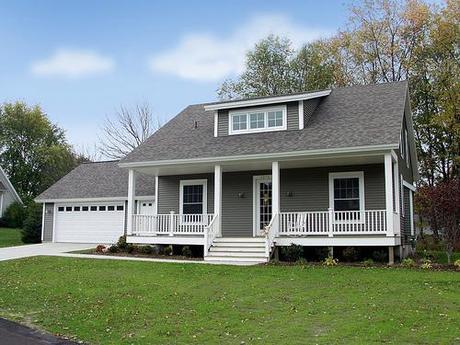
Can green building techniques be used when you build a garage? The short answer is, of course they can! The indoor air quality of your home can be adversely affected by vehicle exhaust, paints, solvents, chemicals and any other fumes that can accumulate in an attached garage. There are many solutions for curbing these dangers that go far beyond just opening the garage door to let the fumes out.
Green Building
The United States Green Building Council (USGBC) has created the LEED for Homes (LEED-H) system, intended to encourage the building of homes that are energy and resource efficient. This program gives points for the use of green building methods and materials, as well as advanced energy usage. Many contractors across the country have tackled green building head-on, mainly due to programs like this. Check out their website for more information on the program and guidelines.
As a builder or contractor; even if you are not ready to take on what is required to gain a silver, gold or platinum certificate, there are still many practices and principles you can take from their program. These can go far in helping you build a greener garage or home.
Here are ten ways you can use green building concepts when choosing materials to construct a garage:
1. Choose energy efficient doors and windows (including the overhead garage door)
2. Materials should be sustainable and renewable
3. Everything should be water efficient
4. Use insulating materials which have a higher R-value
5. Install light sensors and timers
6. Use materials that are low-impact
7. Low or zero volatile organic compounds (VOC) paints
8. Use only highly durable materials that will last
9. Buy local products
10. Choose a solar design, if possible
If you add these ten steps in with waste reduction and good building practices, you have taken a great leap forward in helping to limit the carbon footprint you create with your project.
Homes with an attached garage are in much higher demand in areas with excess snow or long winters. When the proper care is taken during the building of this garage, the air quality in the home can easily be preserved. Every joist bay, crack and gap must be painstakingly sealed and caulked, the door from the house to the garage must be meticulously weather-stripped, and walls and ceilings should be painted. Any rooms beside or above the garage must have CO (carbon monoxide) detectors.
Aside from protecting the interior of your home against toxic transfer, the garage itself should have proper ventilation to expel bad air. To save energy costs, an exhaust fan can be monitored by a timer, which tells it when to turn on and off. This is a great idea if you store your lawnmower in your garage, as the heat and fumes from a cooling mower can be hazardous. An exhaust fan could even be programmed to turn on each time the garage door opens.
It can then be set for an hour or so to clear the air while your lawn mower or vehicle cools down. Exhaust fans can also be wired to come on with the garage door opening.
Photo Credits: PorterSIPs – Flickr

